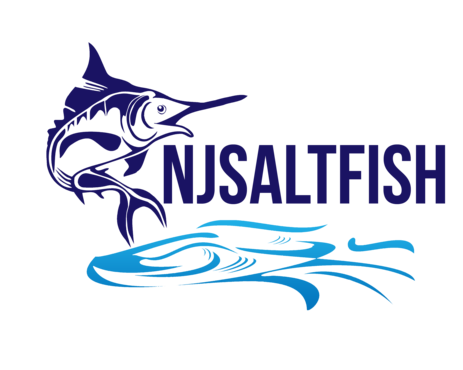Skate (Rajidae)
General Information
The skate is a member of the stingray (Dasyatidae) family whose characteristics land somewhere between rays and sharks as part of the group of fish with bodies that are composed almost entirely of cartilage. New Jersey’s Atlantic coast is home to five species of skate: clearnose skate (Raja eglanteria), little skate (Raja erinacea), rosette skate (Raja garmani), barndoor skate (Raja laevis), and the winter skate (Raja ocellate).
Between the five species of skate, only the rosette and barndoor skates prefer deeper water off the Atlantic continental shelf. The little, clearnose and winter skates prefer sandy shallow water closer to shore. Skates are commonly mistaken for stingrays by both beach enthusiasts and anglers alike. Two distinctions to be made between skates and rays is that skates generally have teeth and lay an embryo sac, whereas stingrays give birth to live young. Overall, species of stingray tend to be larger than their skate cousins. Skates are commonly found to have a tail packed with three to five barbs on the skate’s underside. The larger the skate, the more barbs on the underside of their tail.
Management
Skates are an important piece to coastal ecosystems due to the fish’s tendency to comb the sea floor and act as an ecological vacuum, improving the health of the surrounding environment. Across all five native New Jersey species of skate there are no management concerns presently and population counts for each species show abundant numbers. Outside of New Jersey, the same trends show population growth along other skate habitats.
Size
Sizes among the five species of skate vary. The smallest of the New Jersey skate family is not the so named little skate, but in fact, the slightly smaller rosette skate that can reach lengths of 16 inches long when fully mature. The little skate clocks in at slightly larger than the rosette skate with a full-grown length ranging between 20 and 21 inches. Middle of the pack where it concerns the Garden State skate family is the oddly and aptly named; clearnose skate. Clearnose skates commonly grow to 31 inches long. The two largest skates in the family are the winter skate and the barndoor skate that, when fully mature, reach lengths of 3 feet and 5 feet long respectively.
Food (Bait)
Skates enjoy small shellfish such as shrimp and crab. Their mouths are lined with razor sharp teeth that allow them to crush the shells of unsuspecting prey. Seaworms are a go too in landing skate because of how often fisherman admittedly angling for flounder catch skates by mistake. A shrimp shaped lure may also work to bag a skate, but more anglers than not stick with a trusty worm.
Skates can also be diced up and used as bait themselves to land larger gamefish and even occasionally catch other bigger skate species.
Angling Tips
Many anglers who enjoy fishing the salt waters of New Jersey would rather not catch a skate of any variety on the end of their line and commercial fishing vessels net these fish in droves along the coasts and deep out to sea. Many of these accidental bycatches allow for much of the information known on skates.
However, should one happen to be curious enough to chase after one of these species of skate, a weighted line with a heavy sinker would be the first step in the right direction. Next, a tradition fishing line will only frustrate the angler as skates all come equipped with several rows of teeth. Finally, a seaworm will land a skate or even a shrimp shaped lure will be quick to call the fish within striking distance of the line. Be mindful of the barbs on the underside of the tail should you be so lucky to catch one. Fellow anglers south of the Mason Dixon Line fry skates up often many consider them to be quite tasty.
Reproduction
Skates are a species of fish that lay purse-like eggs along the sea floor within their coastal inlets. These embryo sacs are commonly referred to ‘mermaid purses’ when found along shorelines across the globe by beachgoers. Skates meet up in the same nursery inlet each breeding season. A nursing inlet is a shallow sandy region protected from the forceful and damaging ocean currents that rays, sharks, and skates use to harbor their offspring regardless whether in an embryotic sac or through live birth.
Also, as with sharks and rays, male skates use claspers to directly mate with females while in the nurseries and female skates then produce these ‘mermaid purses’. After the embryo sac is developed within the female skate, she lays a single pouch on the ocean floor where the embryo develops for a full 15 months until escaping the sac to fend for itself.
Habitat
The habitat of the several skate species in New Jersey varies between shallow in-shore waters and the depths of the Atlantic Ocean, but these species all share a common familiarity within the habitat of both ecosystems. In-shore skates require shallow water and tend to be the smaller species of skate while off-shore skates are almost always larger.
Both habitats must require ample food resources such as shrimp, crab and many of the other seafood options humans enjoy as well. Sandy sea bottoms and rocky shoreline inlets allow smaller skates to hide and search for food. Larger skates, benefitting from the comfort their size allows them, roam the open waters far out and even past the continental shelf. Water temperatures seem to be a factor in which species of skate inhabit a particular region of North America. New Jersey’s five species commonly found from New England to North Carolina and more tropical species of skate more commonly found along Florida and the Gulf of Mexico.


